Automation, disease management advance growth, productivity of salmon farming
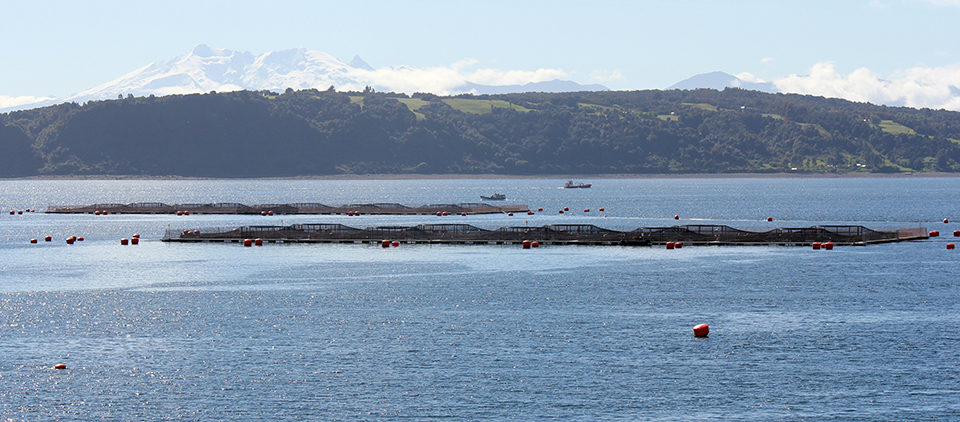
Aquaculture sectors need to innovate to be able to satisfy the increasing global demand for seafood. With scarce farming area and feed raw material resources, and many environmental challenges, the global supply of farmed seafood cannot increase at a sufficient rate without innovating in several key technology areas.
The salmon aquaculture industry has increased its degree of control through the production process via many innovations in fish feed, feeding equipment, information technology-based monitoring of live fish, vaccines and genetics. Salmon production has moved from a technological regime with limited control of many processes to one that can be described as approaching “biological manufacturing.”
Innovations
Many of the tasks that before were manual, such as fish monitoring, fish feeding, fish harvesting and equipment maintenance, have now been automated to a large extent. The industry has moved from labor-intensive production where workers had few formal skills to a more capital-intensive production in which computer hardware- and software-based technologies have replaced several of the manual tasks. This has contributed to significantly increasing productivity and improving the quality of farmed salmon since the 1980s.
At farms, the monitoring of the salmon, feeding and environmental variables are now based on sophisticated information technologies. Labor input has become more specialized. Workers now tend to have certificates, and there is a much higher proportion of labor with a variety of specialized university educations.
Salmon feeds, which represent over 50 percent of farms’ production costs, have evolved dramatically, partly due to large investments in research and development (R&D). Formulation of salmon feeds is now based on extensive knowledge of how different ingredients influence salmon growth and health, and interact with each other.
R&D has also played a significant role in disease management. A number of targeted vaccines have been developed to combat various diseases. To some extent, these have replaced curative medications such as antibiotics. Salmon farming now uses much less antibiotics per kilogram of meat produced than is the case in terrestrial meat production of pork and poultry.
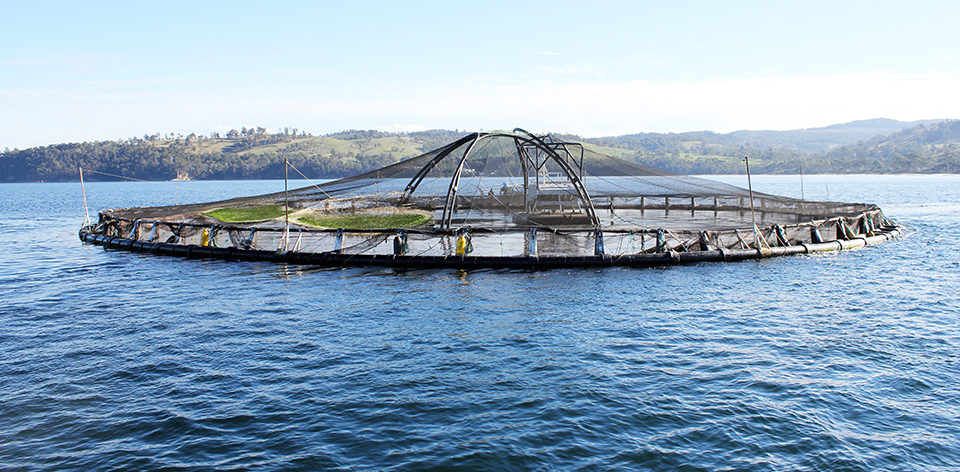
Productivity growth
Innovations in key technologies have contributed to a significant productivity growth in salmon farming. The cost of producing farmed salmon has declined to less than 30 percent of the production costs in the late 1980s, as shown in Fig. 1. This has contributed to the expansion of salmon aquaculture into a multibillion-dollar industry because cost reduction allowed producers to reduce prices.
However, productivity growth in the salmon industry as measured by the cost of production per kilogram of live salmon has stagnated in the past decade (Fig. 1). The industry has been facing changing bottlenecks in production over time, such as diseases and feed material issues. It is highly dependent on new innovations to further increase production control and productivity.
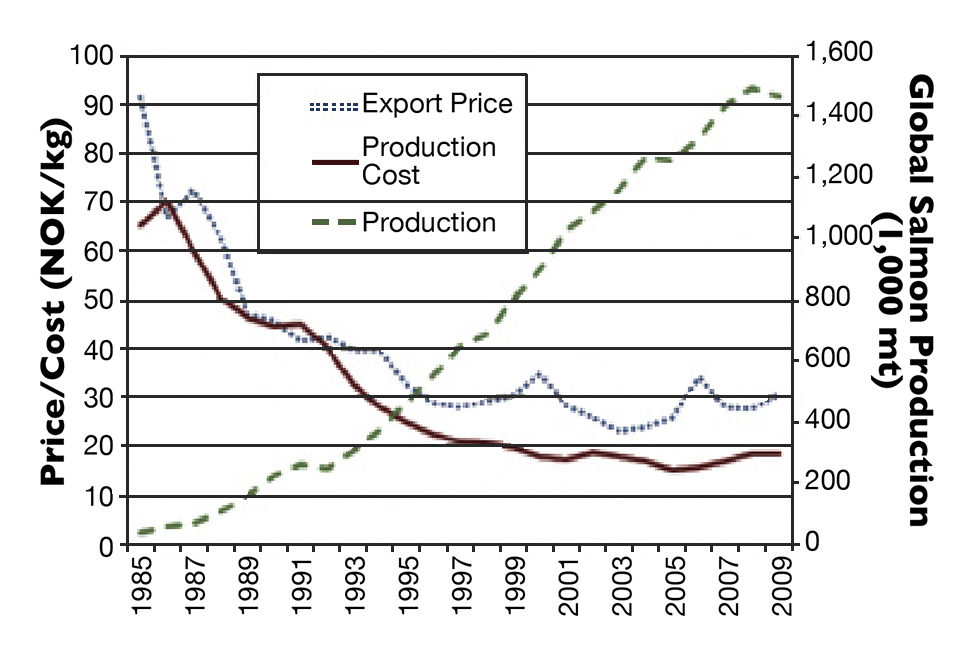
Econometric analysis of productivity
In a study, the authors estimated the rate of technological change (T.C.) in salmon farming. This was done by econometric estimation of a so-called “translog” cost function on a data set of 4,904 observations on individual salmon firms from 1985 to 2008.
If there was technical “progress,” this cost-based measure was negative. The rate of technical change was the measure of how innovations and other factors influenced productivity growth. It was not possible to obtain a “pure” measure of the effects of innovations, as it was hard to identify variables that measured innovations and their adoption. Moreover, in a biological production sector such as salmon farming, the measure of technical change is also influenced by biophysical shocks such as diseases. It is therefore possible to obtain negative rates of technical change.
Based on the estimated translog cost model, the annual average rate of technical progress was 3.4 percent. However, this technical progress varied considerably over time, as shown in Figure 2, which plots the development in the estimated annual average rate of technical change together with the changes in real production costs, including those for feed, labor and capital.
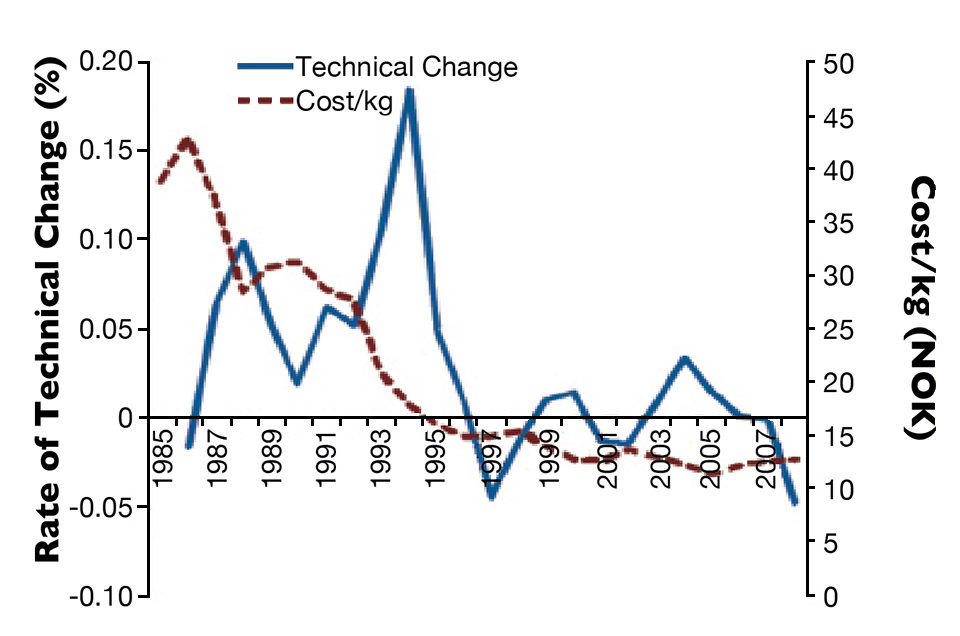
The highest rates of technical progress were experienced from 1987 to 1995. After that, technical progress, as measured by the econometric model, has been low. This is mirrored in the real production costs, which declined rapidly until the middle of the 1990s and have since experienced a much smaller decline, and been more or less stable around 12-13 NOK/kg (U.S. $2.00-2.17/kg) since 2000.
An important explanatory factor behind the decline in technical progress is the inability to reduce salmon mortality rates, which have fluctuated around 20 to 30 percent since the 1990s. The growth in salmon production has led to an increase in disease pressure among the fish, as fish population densities have increased both at the regional and farm site level.
The salmon industry has not been able to innovate sufficiently fast to reduce disease losses. Innovations in automation, such as automated feeding and fish monitoring, and other areas have contributed to increasing production per employee by several times the levels in the 1990s. But this has not been sufficient to compensate for the lack of innovations in fish health and disease management.
Future innovation, growth
In the “innovation system” related to salmon aquaculture technology, the Norwegian government, particularly the Ministry of Fisheries, has been a central actor through legislation, policies and funding. A technological innovation system can be defined as a dynamic network of agents interacting in a specific economic/industrial area under a particular institutional infrastructure and involved in the generation, diffusion and utilization of technology.
The private actors in the innovation system include the salmon-farming companies and their suppliers, feed companies, equipment and software suppliers, and pharmaceutical companies. Universities have been important actors as suppliers of trained labor and researchers, but also through the R&D they have undertaken. Independent research institutions that are predominantly funded by the public sector make up another group of actors that have played a pivotal role through their R&D activities.
Many innovations in salmon aquaculture that contributed to productivity growth were made possible by research at least partly funded by the Norwegian government. The public sector has played an active role both in financing and in carrying out R&D through public research institutions and universities.
In the private sector, fish feed and pharmaceutical companies have also played important roles in financing and executing R&D related to salmon feed, fish health and vaccines. As shown in Fig. 3, the private sector funded 53 percent of aquaculture R&D in 2009 and did around 40 percent of the R&D activities, while the remaining 60 percent was undertaken by universities and research institutions.
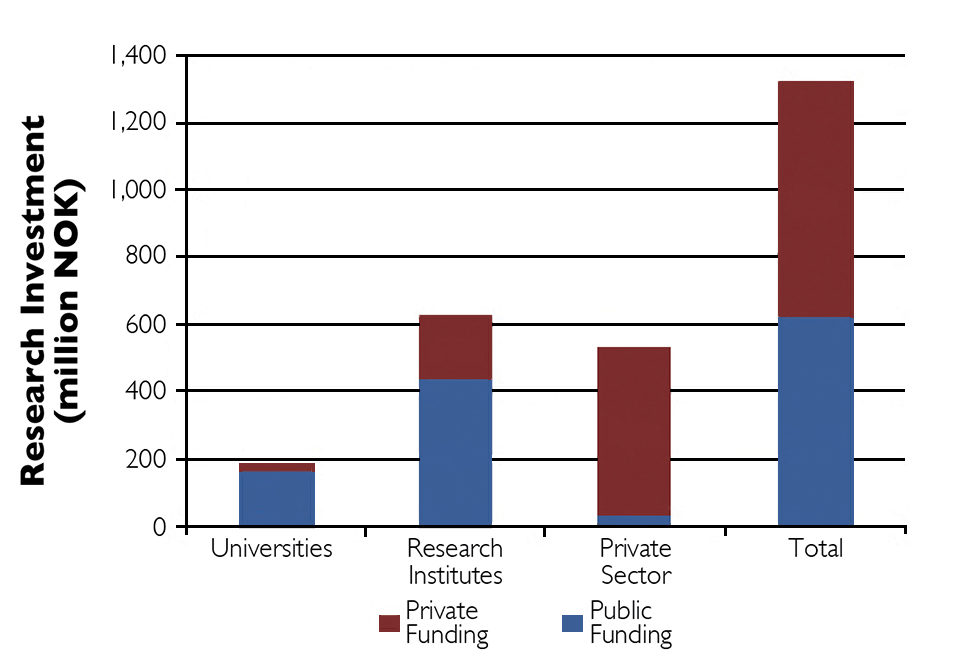
Salmon-farming companies have historically played a smaller direct role in undertaking and financing R&D. Initially, the industry was dominated by small companies with limited financial and human resources. Their role in innovation processes was often to adopt innovations made by suppliers to the industry, such as feed companies, equipment suppliers and pharmaceutical companies.
However, since the early 1990s, the industry has developed a structure that also includes large-scale multinational companies. Salmon companies are expected to have a more prominent role in future innovation processes due to industry consolidation that should increase their ability to both finance and manage R&D.
Innovation modes
The innovation literature distinguishes between two modes of innovation. One, the Science, Technology and Innovation (STI) mode, is based on the production and use of codified scientific and technical knowledge. The other, the Doing, Using and Interacting (DUI) mode, relies on informal processes of learning and experience-based know-how.
One can find many examples of both modes of innovation in salmon aquaculture. But it can be argued that STI-based innovation processes generally have led to more radical innovations than DUI processes have. This is the case for several innovations related to feed and vaccines. Although the future should see both modes of innovation, the more radical innovations the industry needs to increase its productivity and growth have to be based on STI processes.
STI processes can take very different forms. For Norwegian salmon aquaculture, a major actor in selection and funding of research projects has been the government’s Norwegian Research Council (NRC), a body dominated by scientists from academia whose projects have been largely selected on the basis of the academic credentials of the applicants.
Publication of results in international peer-reviewed scientific journals has generally been regarded as an important indicator of success for NRC-funded projects, and innovation outcomes have received less attention. Innovations in salmon aquaculture have often been based on results from NRC-funded projects, but have been made in separate, later projects with commercialization objectives.
Alternative STI channel
Feed companies represent one alternative channel for STI processes. They have funded many R&D projects that involve both their own scientists and scientists from universities and research institutions. The objectives of these projects have typically been to obtain tangible innovations in commercial salmon feeds, with less focus on publication in scientific journals.
There may be a somewhat complementary relationship between the research focused on creating new knowledge and publication in peer-reviewed journals funded through the NRC and R&D funded by the private companies with more direct commercial objectives. However, important questions for the future must address who should decide on the allocation of NRC funding. How much influence should the academic sector have, and how much influence should the private sector have in the formulation of NRC research program objectives and selection of projects?
Until recently, the dominance of academia could be explained by the lack of sufficiently trained candidates from the private sector. But the private sector is increasingly recruiting employees with scientific training, and this should facilitate a change in the balance between the academic and private sectors in the future.
Future focus
In the future, innovations will be required in all key technology areas. For salmon feed, which represents the majority of total costs, it is necessary to continue the replacement of scarce marine ingredients with vegetable ingredients to reduce costs. The industry also faces several salmon diseases, which will require improved vaccines and other strategies to reduce mortality.
Other, more environmental challenges that may not affect productivity directly will have consequences for the industry’s ability to expand, as future expansion will depend largely on environmental impacts. Salmon farm cages and other structures need to be further improved to reduce the likelihood of salmon escaping. Innovations are also required to reduce the presence of salmon lice in the surroundings of salmon farms.
The productivity of salmon aquaculture research in leading to more innovations per million Norwegian kroners invested needs to improve. R&D financed by the government and undertaken by government institutions have been highly necessary in the past to develop key technologies. But in the future, it may be essential to have greater proximity among those who finance and undertake R&D and the industry to increase the innovation rate. This is increasingly possible, as the industry itself has much greater financial and human resources today than in the past to finance, manage and undertake R&D.
Regional strategies
Externalities are present in salmon aquaculture in the forms of diseases, salmon lice and other issues. The production practices of neighboring farms can have huge impacts on salmon growth and mortality, and ultimately productivity.
The industry needs to innovate in terms of regional strategies to limit disease externalities. This will require coordination among salmon firms that goes well beyond that found in other sectors of the economy. For example, firms may need to coordinate extensively on the use of farm sites in a region, which could involve the timing of farm movements and even the sharing of farm sites.
Editor’s note: This article is based on “Innovations and Productivity Performance in Salmon Aquaculture,” a paper published by the authors in 2011 in Advances in Production Management Systems – Value Networks: Innovation, Technologies, and Management. It should be consulted for a more technical exposition and references to relevant literature.
(Editor’s Note: This article was originally published in the March/April 2013 print edition of the Global Aquaculture Advocate.)
Authors
-
Dr. Frank Asche
Department of Industrial Economics
Stavanger Centre for Innovation Research
University of Stavanger
N-4036 Stavanger, Norway -
Dr. Kristin H. Roll
Department of Industrial Economics
Stavanger Centre for Innovation Research
University of Stavanger
N-4036 Stavanger, Norway -

Dr. Ragnar Tveterås
Stavanger Centre for Innovation Research
University of Stavanger
N-4036 Stavanger, Norway
Related Posts

Health & Welfare
A look at tilapia aquaculture in Ghana
Aquaculture in Ghana has overcome its historic fits and starts and is helping to narrow the gap between domestic seafood production and consumption. Production is based on Nile tilapia.

Aquafeeds
A new nutrient for aquaculture, from microbes that consume carbon waste
Biotechnology firm NovoNutrients aims to produce a line of nutraceutical aquafeed additives as well as a bulk feed ingredient that can supplement fishmeal. Its process includes feeding carbon dioxide from industrial gas to a “microbial consortium” starring hydrogen-oxidizing bacteria.

Aquafeeds
Alternative feed ingredient universe to convene at F3 meeting
What started out as a simple yet ambitious contest to drive innovation in the aquafeed sector has evolved into a fully global competition – and collaboration – amongst ingredient suppliers and feed manufacturers.

Intelligence
Aquaculture 2016: Examining the industry’s role in the food system
A wide range of important topics was discussed at the Aquaculture 2016 conference and trade show in Las Vegas last week. Editor Emeritus Darryl Jory shares his notes from the four-day event, which occurs every three years.


